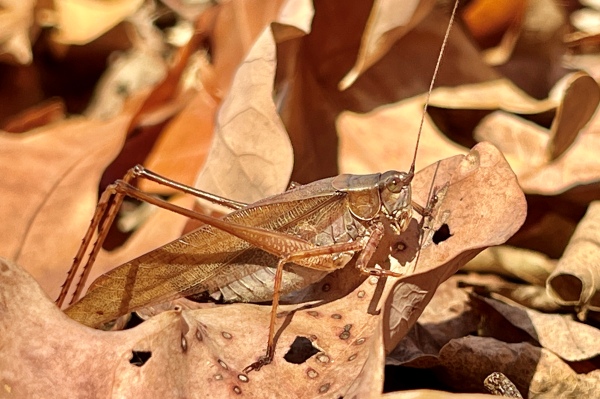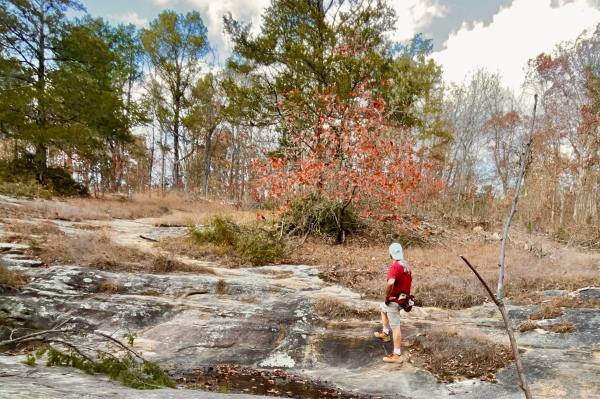I haven’t been to LaBarque Creek for quite a while, so it was good to see it again, especially without encountering a single other person (the benefit of being able to hike during the week compared to a Sunday). It’s still much warmer than I prefer for a fall hike, but it was beautiful out and I did see one insect—an unusually pinkish-brown—colored bush katydid (Scudderia sp.).

This is, in my opinion, the most interesting of the three conservation/natural areas in the LaBarque Creek watershed—by far the most diverse of the seven main tributaries that feed into the Meramec River. More than likely this is a result of the diversity of bedrock—dolomite in the surrounding hillsides with underlying sandstone exposed by the erosive actions of LaBarque Creek. The “rock garden” along one of the high ridges is among my favorite spots in the area.

I was also very happy to see that the Department of Conservation has begun renovating the small sandstone glade remnants on the west side of the loop by cutting out much of the eastern red-cedar that has invaded the remnants over the past several decades.

It will be interesting to watch the vegetational succession that is sure to take place in them over the next decade or so as grasses like little bluestem and eastern broomsedge colonize the now exposed lichen ground layer that had developed beneath the junipers. It will also be an interesting place to look for insects next spring, as wood boring beetles are sure to be attracted to all the newly-available freshly-dead wood.

©️ Ted C. MacRae 2023